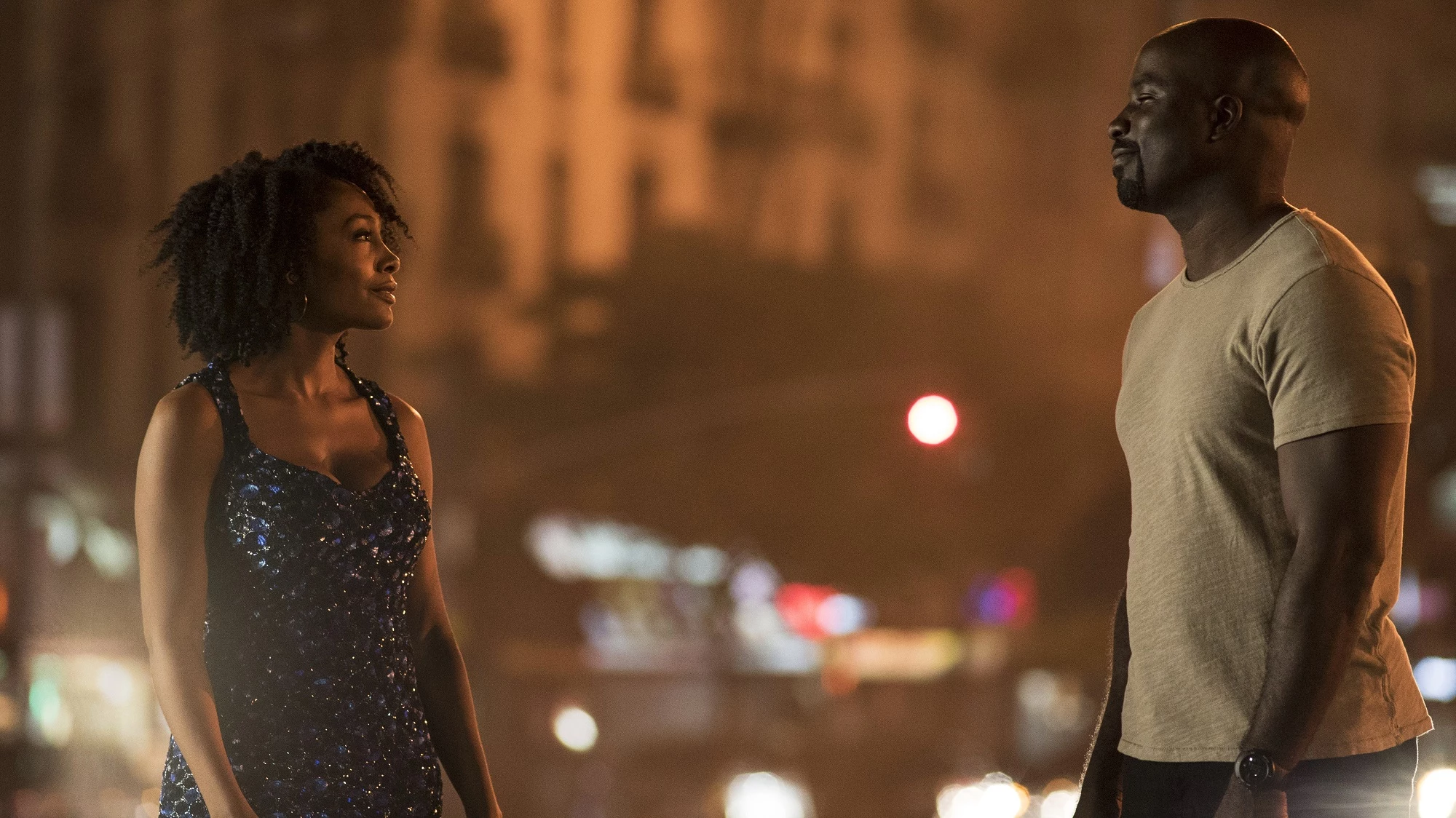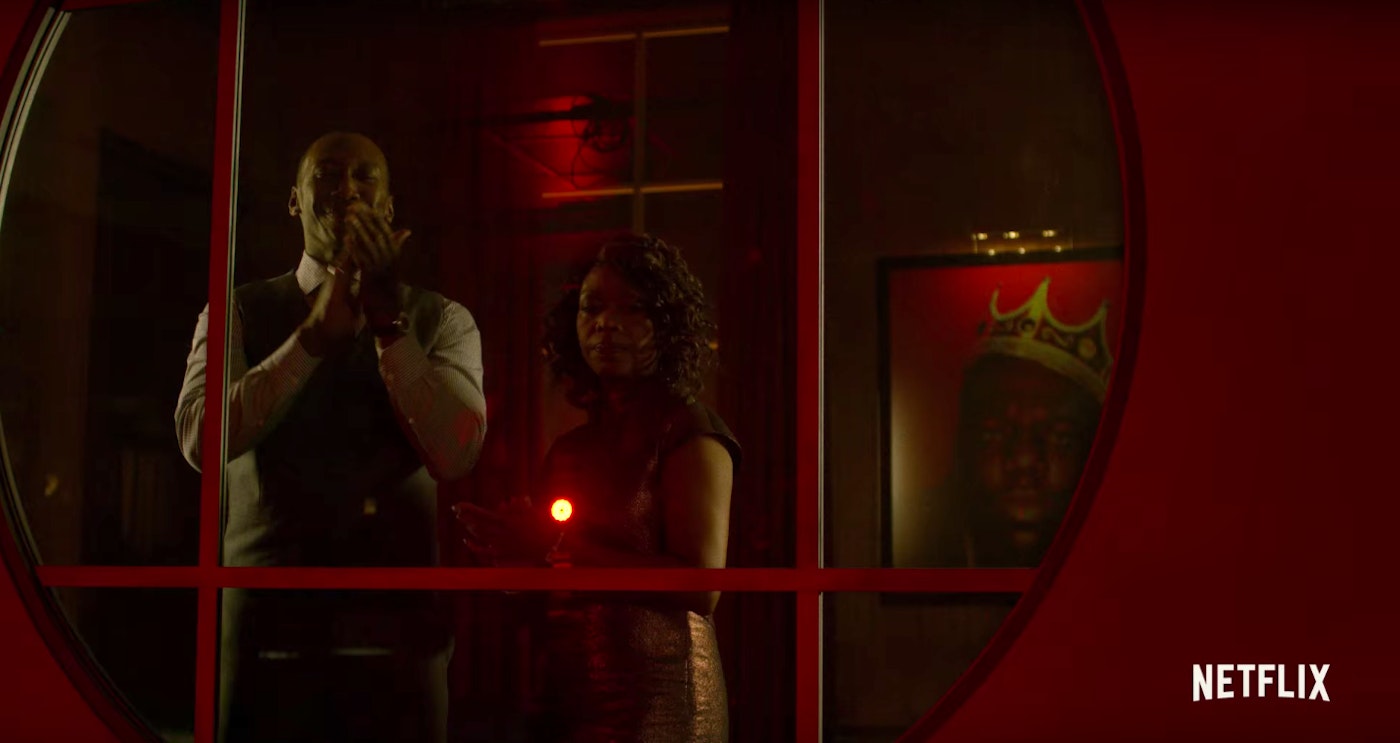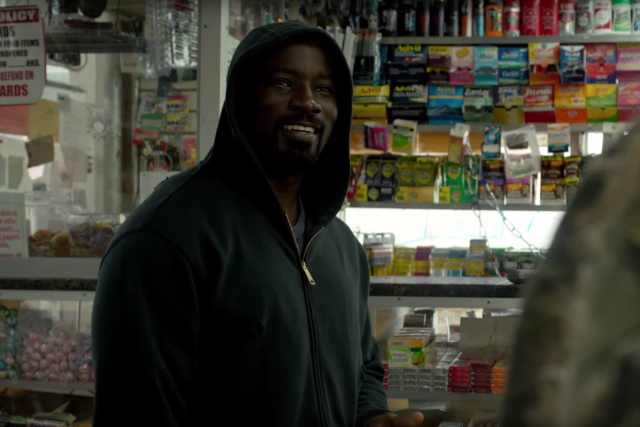
Luke Cage is the latest Marvel television series to be picked up by Netflix. The thirteen-episode first season premiered Friday September 30, 2016. I binge-watched all thirteen episodes over two days and I’m happy to report that it did not disappoint. Considering Marvel’s success with Daredevil, followed by Jessica Jones—where Luke Cage was introduced, it was inevitable that the Harlem-based hero would get his own series. The show isn’t only playing on the successful wave of comic book-to-television genre—as seen with Smallville, Arrow, The Flash, and Gotham. It also joined the move to feature more Black comic book characters as primary protagonists on both television and in the cinema—something that Hollywood has neglected to do for far too long.
As a person, Luke Cage shares character similarities with Matt Murdock (Daredevil) and Jessica Jones. All of them have extraordinary talents and the skills that would allow them to work in more lucrative environments. Yet, they chose not to.
with Matt Murdock (Daredevil) and Jessica Jones. All of them have extraordinary talents and the skills that would allow them to work in more lucrative environments. Yet, they chose not to.
 with Matt Murdock (Daredevil) and Jessica Jones. All of them have extraordinary talents and the skills that would allow them to work in more lucrative environments. Yet, they chose not to.
with Matt Murdock (Daredevil) and Jessica Jones. All of them have extraordinary talents and the skills that would allow them to work in more lucrative environments. Yet, they chose not to.For example, Murdoch could’ve worked for a prestigious law firm while Jones could’ve worked for a well-established detective agency. As Cage was told, he would’ve been untouchable had he been a football player in the NFL. Despite that, all three chose to remain in low profile professions. Ones that always left them broke by the end of the week.
The reasoning behind Luke Cage’s choice to do janitorial work in his mentor’s barber shop by day, while working as a dishwasher in a famous Harlem nightclub at night, became obvious as the series progressed. Through a series of flashbacks, we learn that Cage spent time in Seagate Penitentiary. However, he wasn’t known as Luke Cage back then, he was Charles Lucas—a victim who was framed by his brother. While in Seagate, he was tricked into taking part in a very risky experiment, one which he was not expected to survive. As with the fate of many comic book protagonists before they became superheroes, the experiment went sideways. In the case of Charles Lucas, a disgruntled prison officer deliberately meddled with the machinery. As a result, there was an explosion—one that nearly leveled the laboratory. However, Lucas emerged with superhuman strength along with impenetrable skin.
 From watching Jessica Jones, it's easy to discern that when he escaped Seagate, Lucas would’ve made his way to Hell’s Kitchen where he changed his name to Luke Cage. He would later move to Harlem. There, he works low-paying jobs under the table to remain below the radar.
From watching Jessica Jones, it's easy to discern that when he escaped Seagate, Lucas would’ve made his way to Hell’s Kitchen where he changed his name to Luke Cage. He would later move to Harlem. There, he works low-paying jobs under the table to remain below the radar. What the writers got right was not only the excellent plot, the cliffhanging endings to each episode, and the characters who were not the least bit stereotypical, but also capturing the true essence and culture of Harlem. The writers could’ve portrayed the community as a decaying, crime-ridden borough of New York City, where African-Americans are unemployed and uneducated. However, we were able to see the opposite—where both the community was thriving and the neighborhood was clean and lively.
And even though there was a criminal element to the story (after all, what superhero story doesn’thave one), where the Black villains, Cornel “Cottonmouth” Stokes (Mahershala Ali), Mariah Dillard (Alfre Woodard), and several others were wealthy, well-dressed, and came across as being upstanding citizens, we were are shown many Black characters—the good guys—who were working in non-stereotypical, and non-subserviant roles.
story (after all, what superhero story doesn’thave one), where the Black villains, Cornel “Cottonmouth” Stokes (Mahershala Ali), Mariah Dillard (Alfre Woodard), and several others were wealthy, well-dressed, and came across as being upstanding citizens, we were are shown many Black characters—the good guys—who were working in non-stereotypical, and non-subserviant roles.
 story (after all, what superhero story doesn’thave one), where the Black villains, Cornel “Cottonmouth” Stokes (Mahershala Ali), Mariah Dillard (Alfre Woodard), and several others were wealthy, well-dressed, and came across as being upstanding citizens, we were are shown many Black characters—the good guys—who were working in non-stereotypical, and non-subserviant roles.
story (after all, what superhero story doesn’thave one), where the Black villains, Cornel “Cottonmouth” Stokes (Mahershala Ali), Mariah Dillard (Alfre Woodard), and several others were wealthy, well-dressed, and came across as being upstanding citizens, we were are shown many Black characters—the good guys—who were working in non-stereotypical, and non-subserviant roles.There’s Detective Mercedes “Misty” Knight (Simone Missick), and Claire Temple (Rosario Dawson) the nurse whom we first saw in Daredevil, who both had Cage's back. There was even an African-American law student who flirted with Cage in the barber shop. In addition, we were also introduced to Captain Betty Audrey, and Inspector Priscilla Ridley of the NYPD. One should also notice that the latter six I mentioned were women—highlighting Marvel’s response to giving women—especially Black women—more prominent roles. I’m sure Ms Shonda Rhimes would be impressed.
 As I mentioned earlier, the show presented us the essence and culture of Harlem. From the typical barber shop quarrels, to the Jazz and Hip-Hop performers. Viewers were treated with appearances and performances from artists such as Charles Bradley, Faith Evans and Raphael Saadiq. A comical scene in one of the last episodes even featured a cameo appearance from Method Man—as Cage saves him and the store owner from two armed robbers.
As I mentioned earlier, the show presented us the essence and culture of Harlem. From the typical barber shop quarrels, to the Jazz and Hip-Hop performers. Viewers were treated with appearances and performances from artists such as Charles Bradley, Faith Evans and Raphael Saadiq. A comical scene in one of the last episodes even featured a cameo appearance from Method Man—as Cage saves him and the store owner from two armed robbers.Although it may not be obvious to many, I couldn't help notice that the writers may have thrown in a hidden Trayvon Martin reference, with regards to Cage wearing a hoodie in many scenes. It ought to send a message that just because a Black man is wearing a hoody doesn't automatically mean that he's a criminal.
The show falls into the same dark environment as its predecessors, Daredevil and Jessica Jones. This was in contrast to the Marvel movies such as the Avengers, Captain America, and Iron Man. This is important to mention as there were references to The Avengers such as ‘The Attack on New York’ and ‘The Green Monster’ which demonstrated that the show took place soon after those events.
predecessors, Daredevil and Jessica Jones. This was in contrast to the Marvel movies such as the Avengers, Captain America, and Iron Man. This is important to mention as there were references to The Avengers such as ‘The Attack on New York’ and ‘The Green Monster’ which demonstrated that the show took place soon after those events.
 predecessors, Daredevil and Jessica Jones. This was in contrast to the Marvel movies such as the Avengers, Captain America, and Iron Man. This is important to mention as there were references to The Avengers such as ‘The Attack on New York’ and ‘The Green Monster’ which demonstrated that the show took place soon after those events.
predecessors, Daredevil and Jessica Jones. This was in contrast to the Marvel movies such as the Avengers, Captain America, and Iron Man. This is important to mention as there were references to The Avengers such as ‘The Attack on New York’ and ‘The Green Monster’ which demonstrated that the show took place soon after those events. However, one major difference between the series and the comic, was that the villains did not have super powers. Even though Luke Cage didn’t have an adversary who could challenge him with regards to physical strength, it should not deter fans from watching the series. The villains were still very resourceful in confronting Cage. Furthermore, they were the kind of villains that viewers love to hate. Their individual backgrounds were so well developed, that rather than come across as evil antagonists who are out to rule the world, they’re depicted as once being good people who’ve gone bad—making them interesting to watch.
However, one major difference between the series and the comic, was that the villains did not have super powers. Even though Luke Cage didn’t have an adversary who could challenge him with regards to physical strength, it should not deter fans from watching the series. The villains were still very resourceful in confronting Cage. Furthermore, they were the kind of villains that viewers love to hate. Their individual backgrounds were so well developed, that rather than come across as evil antagonists who are out to rule the world, they’re depicted as once being good people who’ve gone bad—making them interesting to watch.There’s Cornell “Cottonmouth” Stokes who’s often seen looking down from his gallery in his nightclub as a King would look down on his kingdom from his castle. He even stands in front of his portrait of Biggie Smalls—who’s wearing a tilted crown. In one scene taken at a different perspective, it would appear as though Stokes was the one wearing it.
seen looking down from his gallery in his nightclub as a King would look down on his kingdom from his castle. He even stands in front of his portrait of Biggie Smalls—who’s wearing a tilted crown. In one scene taken at a different perspective, it would appear as though Stokes was the one wearing it.
 seen looking down from his gallery in his nightclub as a King would look down on his kingdom from his castle. He even stands in front of his portrait of Biggie Smalls—who’s wearing a tilted crown. In one scene taken at a different perspective, it would appear as though Stokes was the one wearing it.
seen looking down from his gallery in his nightclub as a King would look down on his kingdom from his castle. He even stands in front of his portrait of Biggie Smalls—who’s wearing a tilted crown. In one scene taken at a different perspective, it would appear as though Stokes was the one wearing it.There’s also Councilwoman Mariah Dillard, Stoke's cousin, who presents herself as the savior of Harlem. She’ll do several photo-ops hugging and kissing children one moment only to splash hand sanitizer once the cameras aren’t pointing in her direction. In fact, Dillard was an even more conniving character than Cottonmouth, considering that even though her involvement in criminal activity is suspect, she always manages to slip through the cracks to avoid facing justice.

If you enjoyed the show’s predecessors, you’ll likely enjoy Luke Cage. Even if you’re not a comic book fan, the show is a well-written original that you could still follow and enjoy. Each episode ends on a cliffhanger, guaranteeing that you’ll tune in for the next episode—or binge-watch the season in under twenty-four hours as I did. The ending had a closure, albeit with an opening that will lead into the second season. Hopefully we ought to see one within twelve months.
5 Stars.

